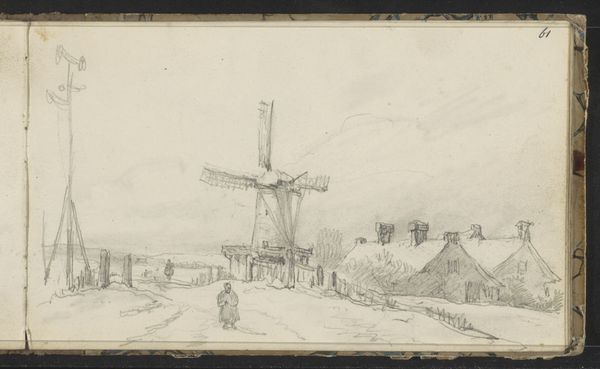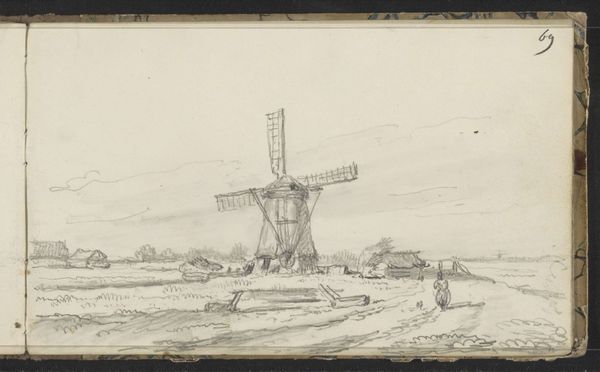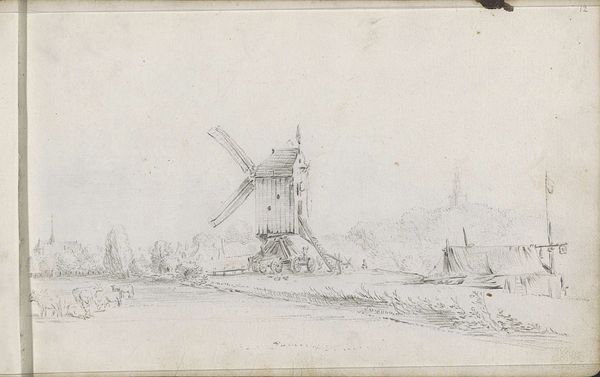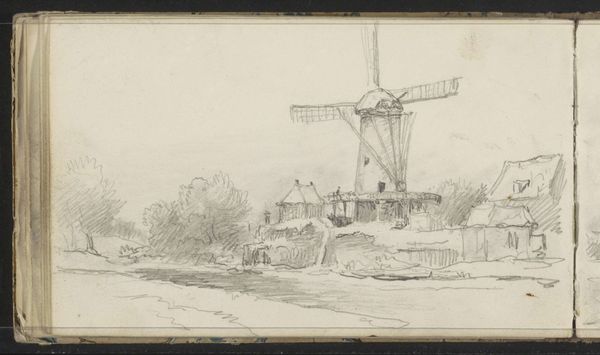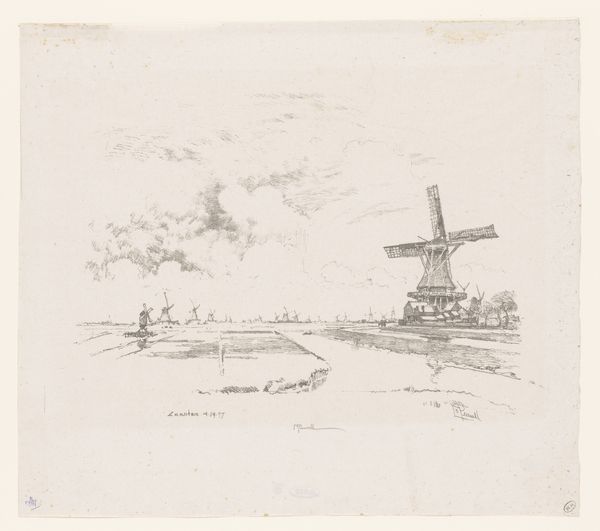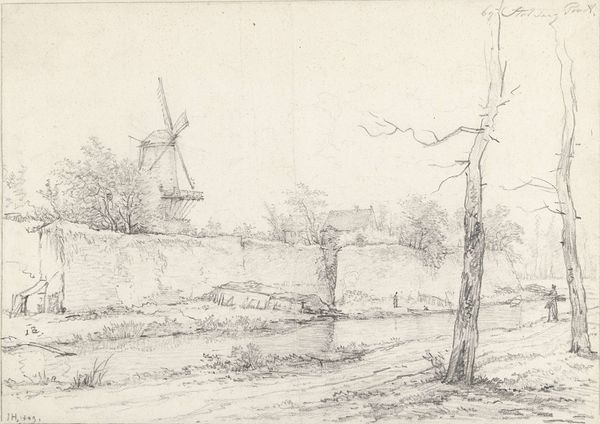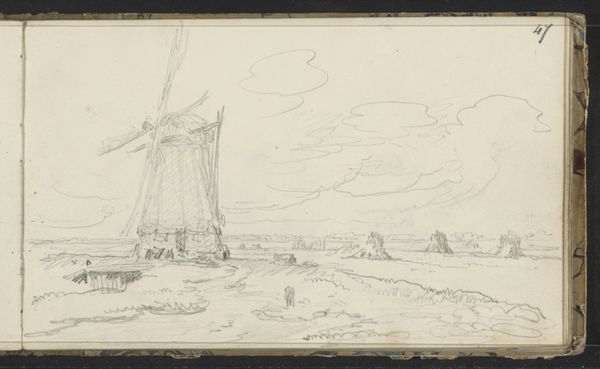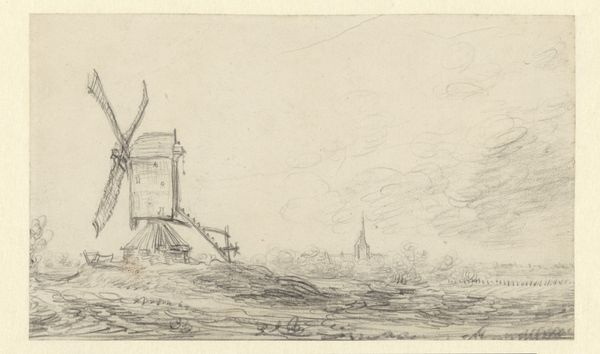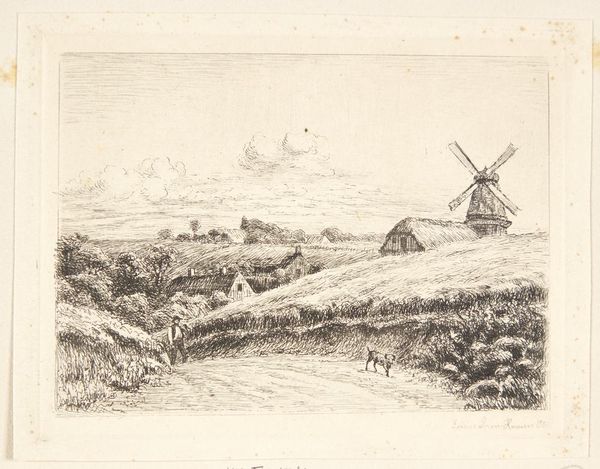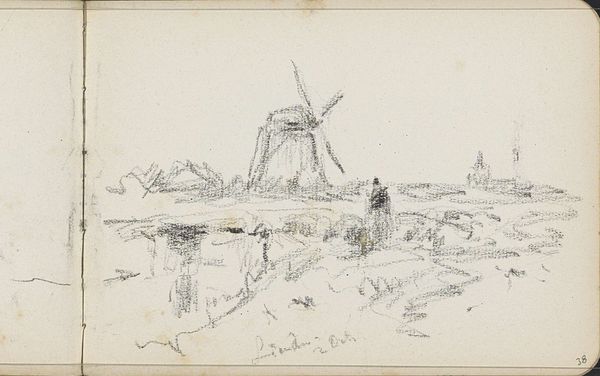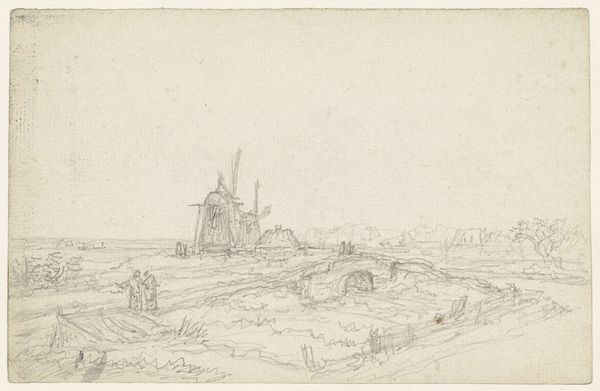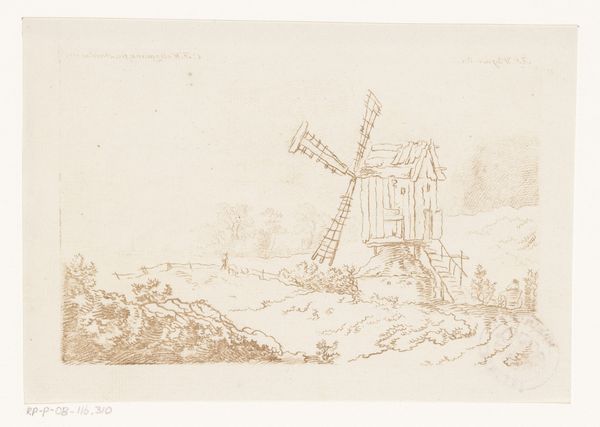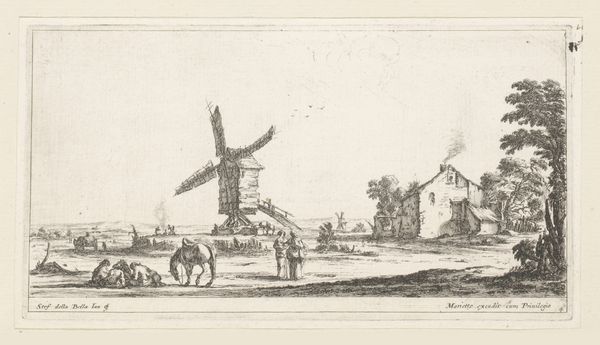
drawing, graphite
#
drawing
#
landscape
#
romanticism
#
graphite
#
cityscape
#
realism
Copyright: Rijks Museum: Open Domain
Editor: This delicate graphite drawing, "River Landscape with a Mill," made sometime between 1803 and 1818 by Arnoldus Johannes Eymer, has such a tranquil air. It almost feels like looking at a memory. How do you interpret this work? Curator: The immediate evocation of memory you perceive isn’t accidental, I think. Consider the windmill. It isn’t just a functional structure, but also an emblem deeply woven into the Dutch identity, particularly evoking ideas of a past golden age. Note also its placement atop a rise – not just practical, but visually reinforcing the idea of the windmill dominating the landscape, becoming an idea more than a mere thing. Editor: So, the windmill is a symbol loaded with meaning, beyond its function. Is the whole drawing designed like this, or did the artist choose what to portray and what to skip over? Curator: It’s both! Look at how the foliage is rendered. Rather than striving for botanical accuracy, the artist is giving you, essentially, symbolic foliage - cues suggesting ‘nature’, softness, and pastoral serenity. This suggests that Eymer wasn't trying to give a straightforward accounting of facts, but wanted to tap into feelings and collective understanding through his use of suggestive rather than literal depictions. Editor: I see what you mean. The windmill is front and center. And those stylized trees soften the edges of everything, bringing nature to it all. Curator: Precisely! These elements contribute to the landscape's quiet mood, turning the entire scene into a sort of memory-scape, resonating within our cultural imagination. What would you say is the psychological effect of viewing such a drawing? Editor: Now that I notice that there's not many realistic aspects, it allows us to connect with a shared past and even feel something like collective nostalgia. The simplicity emphasizes universal human sentiments. It’s amazing that so few marks can communicate so much! Curator: Indeed. And this is how artists embed and trigger culturally shared feelings with certain motifs. The power of the familiar… and of cultural memory made visual.
Comments
No comments
Be the first to comment and join the conversation on the ultimate creative platform.
